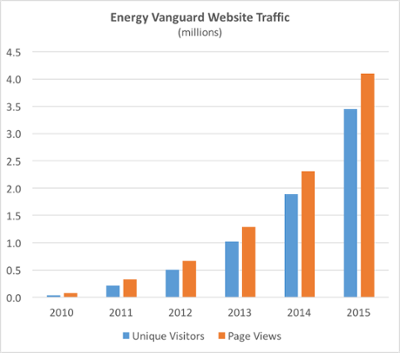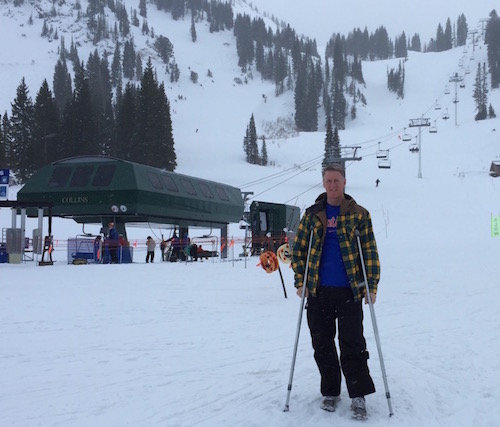7 Wishes for a Green ’16

Niels Bohr, a Danish physicist, said “Prediction is very difficult, especially if it’s about the future.” Bohr was a pretty smart guy, having been one of the folks who got the whole quantum physics thing going a century ago, and I’m not inclined to disagree with him on this matter.
Niels Bohr, a Danish physicist, said “Prediction is very difficult, especially if it’s about the future.” Bohr was a pretty smart guy, having been one of the folks who got the whole quantum physics thing going a century ago, and I’m not inclined to disagree with him on this matter.
Thus I will not be making predictions about the future. If you really press me, however, I might be tempted to make predictions about the past, but even that’s a bit scary, what with the malleability of memory and never knowing for sure which of the multiple universes I might exist in at any given time. But I will give you something: my wishlist for the built environment and beyond in 2016.
My wishlist focuses mainly on buildings, but I have included a few other wishes, too. Also, when I call out a particular group like builders of HVAC contractors, I know that there are some who do a great job and really know their stuff.
Now, let’s get on with it, shall we?
My wishlist for a Green ’16:
Builders adopt a house-as-a-system approach
This most fundamental step is missing in a great number of building projects. The builder makes sure all the pieces (money, design, materials, trades) get put together but often misses critical details that compromise the building enclosure or mechanical systems, leading to reduced comfort, healthfulness, durability, and energy efficiency. The builder or supervisor could be the house-as-a-system person or they could hire a third party to keep an eye on the big picture. Let’s get the Building Science 101 down this year.
All trades understand the importance of airtightness
Having an airtight house is arguably the most important thing you can do to improve a home. It affects comfort, healthfulness, durability, and energy efficiency. It doesn’t cost much. And it has a really good return on investment.
Posting signs like the one shown above, along with training the trades and having someone responsible for enforcement, can help a lot.
Manufacturers stop trying to shoot down their comptetition
Come on, folks. Enough with the threats about the dangers of using your competitors’ products: Your house will burn down; your house will rot; you’ll be poisoned by toxic chemicals; you’re killing the planet… Whatever happened to, “Well, that’s a good product but we think you should use ours because…”
HVAC contractors focus as much on distribution as they do on equipment
This is perhaps the issue I’ve written the most about here in the Energy Vanguard Blog. From my favorite duct disasters (here and here, for example) to the research behind losses in sagging ducts to duct leakage, I’ve covered this topic extensively. We’re getting better about duct leakage, but there are still a lot of gains to be made with proper air flow.
Architects and designers get HVAC systems inside the enclosure and leave enough space for them
Yes, let’s get the ducts inside the enclosure, but let’s give them enough space there, too. I know no one wants to give up those square feet of floor area inside the home, but there are better ways to get HVAC systems inside than what you see below.

Homeowners waste less money on “smart” gadgets and other devices that won’t really work as advertised
Many of us want the shortcut to comfort, healthfulness, durability, and energy efficiency it seems. So we fall for those smart vents that promise to save energy or that device that mists water near the air conditioner or the exhaust fan that promises better performance than a dehumidifier. But there aren’t any shortcuts. You can’t get around building science. Again, it comes down to Building Science 101.
Utility companies stop resisting energy efficiency and renewable energy and figure out how to incorporate them into the mix
The world of energy is changing. Some states are already facing this in a big way, with the appearance of the “duck curve” in utility load profiles. States like California are encouraging the use of solar and efficiency, while others, like Georgia, are lagging. And then there’s Nevada, which is going backwards.
Arnold Schwarzenegger nailed it in his recent Facebook post titled, I don’t give a **** if we agree about climate change. Totally ******* nailed it. Take the time to go read it, if you haven’t seen it yet. It’s definitely worth your time.
What’s coming in 2016?
I’ve been writing this blog for nearly six years now. This article is number 700. What that means is that I’ve gotten to the point where I’ve covered a lot of the basic building science, so I don’t have much new to say. I do go back and cover previous topics in different ways sometimes, and of course I cover some of the news in the world of building science. I’ll keep doing all that and filling in some of the areas I haven’t discussed yet.
I used to show the traffic to our website at the beginning of each year but haven’t done that in a while. I just put the numbers together this weekend, though, so here’s how we’re doing:

Wow! Thanks to all of you who subscribe to the blog and share the articles. I had no idea it would be this popular when I started it.
Aside from the blog, we’re moving in a new direction this year at Energy Vanguard. We dropped our accreditation as a HERS training provider at the end of 2015 and will be replacing that with some new training and education projects. We were reaching about 20 people a year with HERS training and look to expand that number a lot with our new direction. You’ll see more about that in a month or two.
If you have any topics you’d like to see covered here in the blog or ideas for our training and education, please let me know.
The good news is that I’m suddenly in a position where I’ll have more time to write and create curriculum than I thought I’d have. I came back from my Utah skiing trip last week with a fractured tibia and torn ACL. Ah, well. There’s always next year to catch up on the skiing I’ll be missing this year.

Here’s to a Green ’16!
Related Articles
Building Science Schmilding Science; Let’s Do Things Right in 2014
The State of Building Science in the Post-Mayan Non-Apocalypse
A Simple, Inexpensive Way to Better Airtightness
Photo of San Francisco fireworks by Jay Huang from flickr.com, used under a Creative Commons license.
NOTE: Comments are moderated. Your comment will not appear below until approved.
This Post Has 8 Comments
Comments are closed.


Alison,
Alison,
Happy New Year, and thank you for all the work you put into the blog. I hope you heal quickly. I loved the photo (not the crutches though) – have many happy memories of skiing Collins and Wildcat and lunches at the Watson!
-DJ
Thanks, Don! I’ve been to
Thanks, Don! I’ve been to Alta twice now, and I seem to find myself skiing off of Sugarloaf more than any other lift there. But the whole place is wonderful, and I even had a group lesson that took us into the Ballroom and Saddle areas. Can’t wait to go back. I’m trying to convince my wife to move to Salt Lake City now, but that could take a while.
Get well soon, Allison and
Get well soon, Allison and thanks for all you have done, and will do in years to come to further building science 👍.
I’m pleased, but humiliated, you mentioned NV as a state where a big step backward has occurred in regard to renewables. I’ve been following developments, and while new rate schedules have been published, as well as total estimated costs to non-PV ratepayers, no one has run the figures to estimate the additional annual charges to each non-PV account. I suspect the number would be minimal and acceptable to most, and we would be willing to shoulder the “burden” in the interest of expanding the industry and reaping the obvious advantages to society. The cost of having NVEnergy as back-up needs to be addressed, but cutting a budding rooftop solar industry in our state off at the knees is not the way to do it.
All the best!
Thanks, Steve. Yeah,
Thanks, Steve. Yeah, utilities often like to present a skewed picture of reality, making the things they don’t like seem worse than they are. What this means is that we need to change the rules so they don’t make money off of big capital projects and increasing sales of kWh but rather by providing energy services and meeting the needs of their customers in ways that are better for the environment.
Nice summary of what we need
Nice summary of what we need to work on for this year, Allison. I think you should have touched on using a universal energy rating (EUI, HHI, HERS, kBtus/s.f./HDD, etc.) as well. Realtors, home buyers, and renters need a common metric.
I’ll be watching closely for your next education and training direction. I suspect something like a cross between HeatSpring and Khan Academy. We certainly could use a new approach to disseminating building science to those who want it or need it.
You may have to get one of those sit-n-ski devices to finish out the ski season. Or be the practice patient for Ski Patrol exercises just to still get out on the slopes.
Thanks for the blog and sorry
Thanks for the blog and sorry about the skiing accident.
Ideas for topics in 2016.
– Utilities attach on solar. I live in Michigan and the two main Utility companies are trying to change the net metering law. They want to treat a home owner with solar panels as a competitive producer. The Utility will sell at the established residential rate (I think it is around 14 cents per kWh) and buy all energy at the market rate for imported energy. This rate fluctuates hourly but it averages around 6 cents per kWh. Someone compared it to an apple orchard owner who is forbidden from eating any apples they grow and must by from the grocery store if they want to eat an apple. The practical effect of this change will be to add over a decade on the ROI payback. Solar has finally gotten affordable and now the goal post is being shifted. I want to add solar to my house but I’m not going to donate money to the Utility company.
2) An article on the costs of solar. Average installed cost per kW for a small system or a large system. Rebates and tax write offs available for residential, commercial, and non-profits.
3) Use of thermal imaging cameras to check envelope integrity.
4) Changing the status quo. Everywhere around me I see people talking about wanting to make more energy efficient buildings. But habits are hard to change. Suggesting a thicker wall, or better window, or different HVAC system, there’s always a reason to not change. Any advice or examples of when someone made it work.
Thanks for the suggestions,
Thanks for the suggestions, Bill! They’re all good ones. I really like the apple analogy and will have to use that.
I thought some more about
I thought some more about that. Maybe a garden would be a better example. Anything grown in the garden has to be sold at the price a farmer would get and all food to be eaten needs to be purchased at the grocery store.